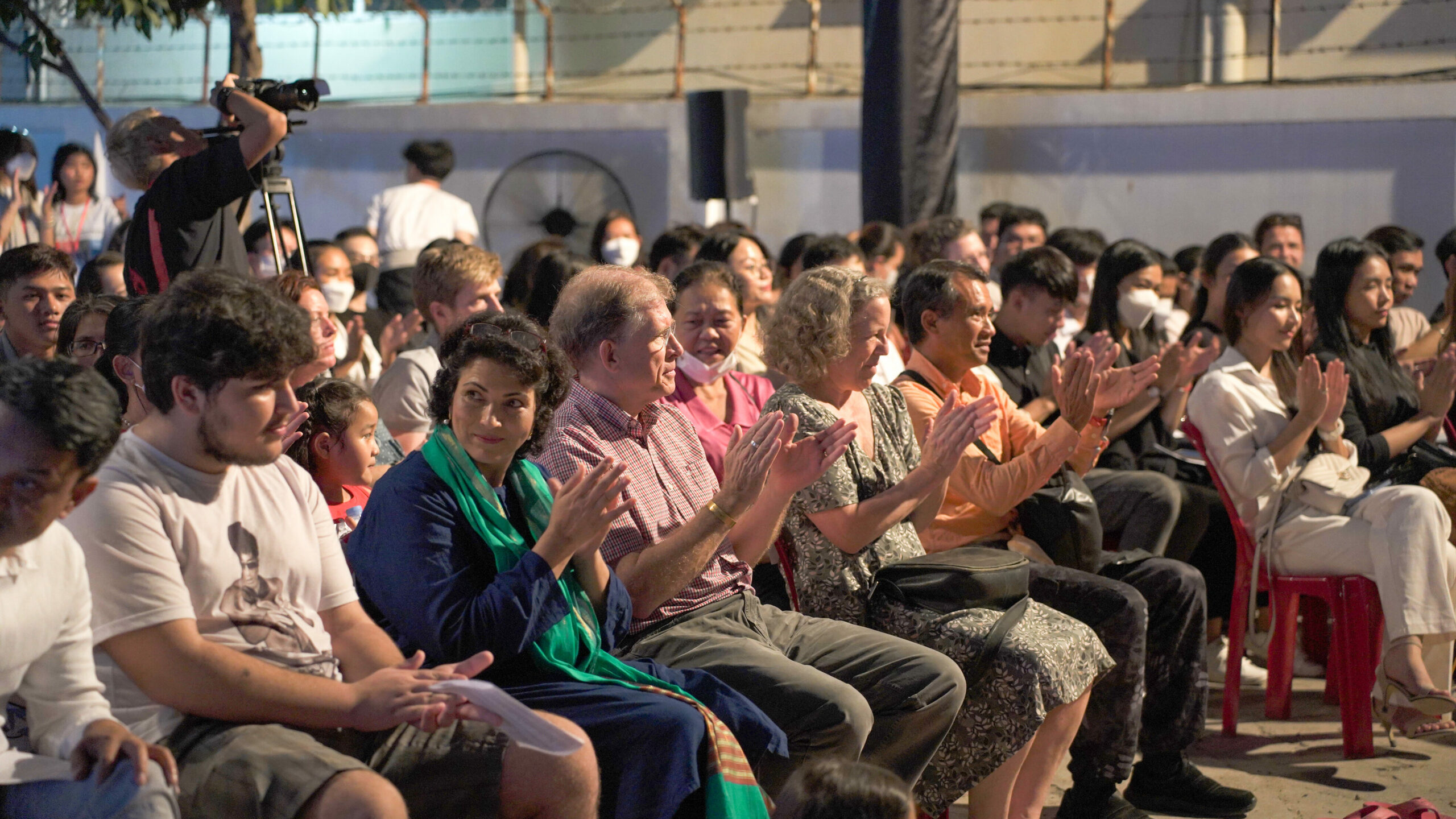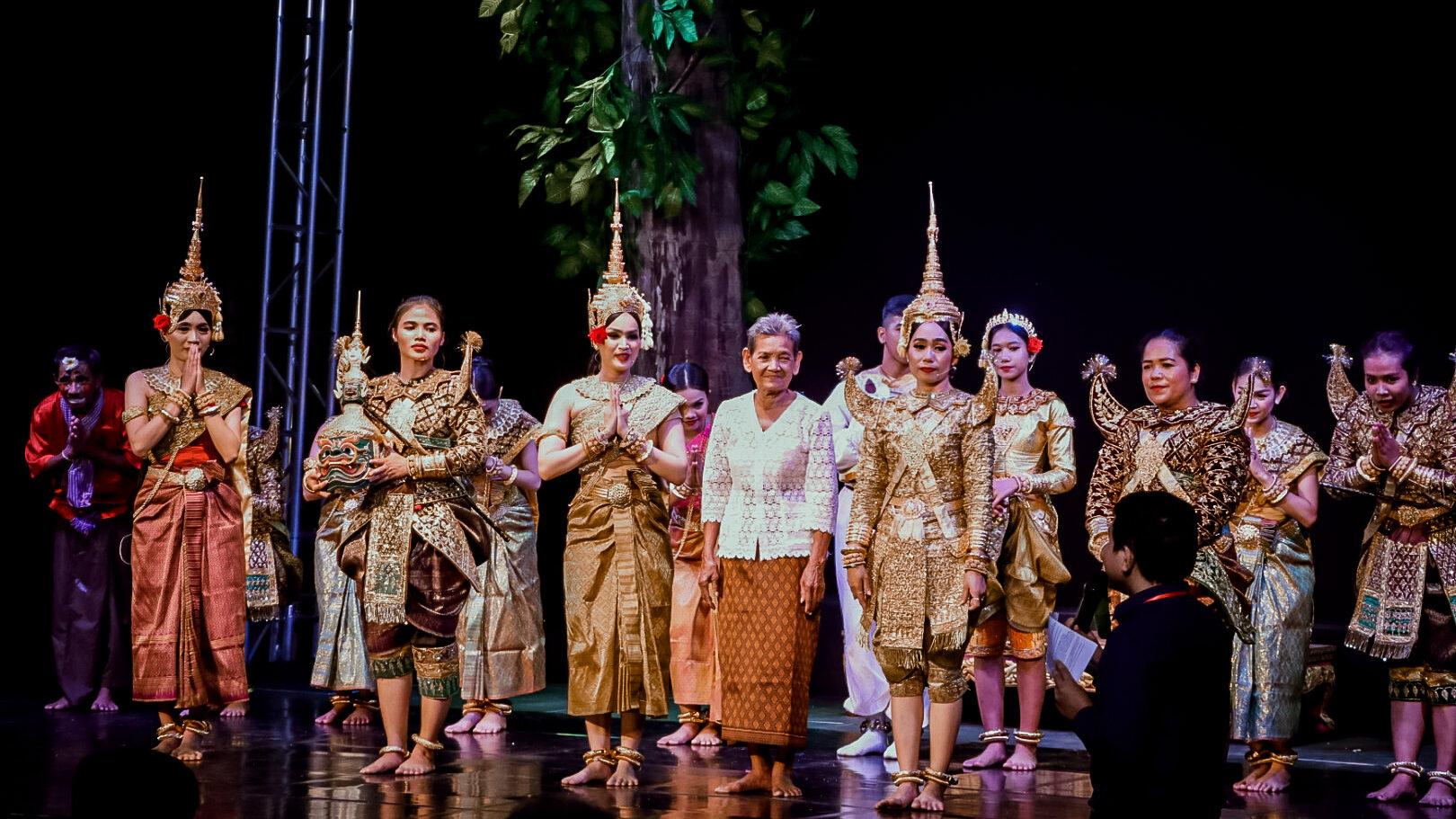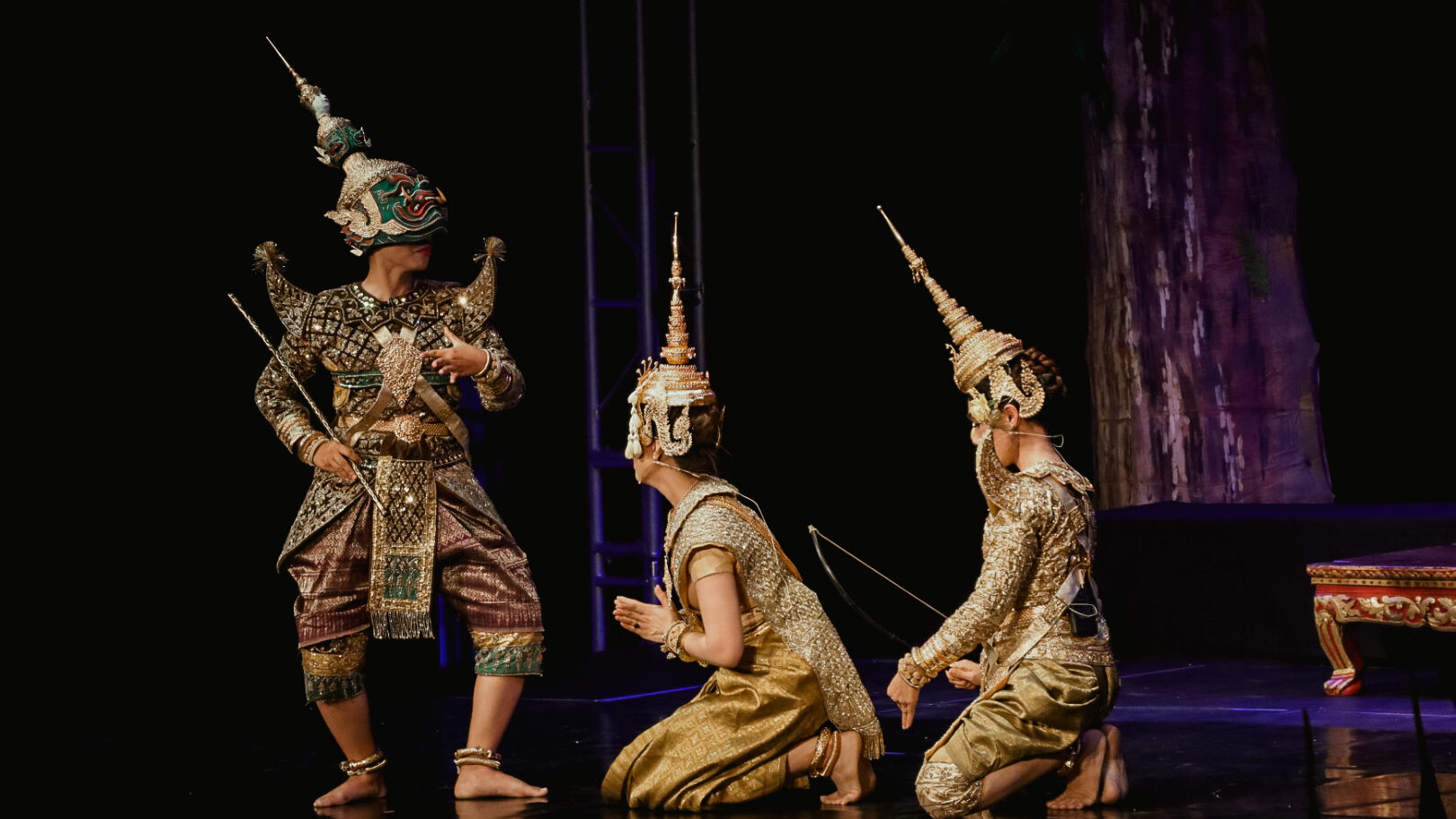“We concern over the loss of the truth in history if the script is adapted to current society. For instance, we wanted to show forgiveness as a moral of the story for this current society. But, ultimately, we decided that we must keep the originality—which means Lin Thong eventually didn’t spare the life of Ahkal Yeak when he won the war. But what it left for audiences is the act of reflection. They can think about what is changing in this society now.”
Nam Narim, the troupe director

More than 400 audiences have shown up in the performance of Lakhoan Boran Wat Kien Svay Krao [Classical Theater of Wat Kien Svay Krao]. While some had seats, others were willing to stand in the crowd and watch. Our tickets were sold out.
“They are the reason that our Lakhoan Boran is alive again.” Troupe Leader Pum Sokkhim and Artistic Coordinator and Choreographer Nam Narim said of the audiences.
With the mission of being the catalyst in a vibrant arts sector, it is crucial for Cambodian Living Arts (CLA) to support the installation of the classical theater performance Lakhoan Boran Wat Kien Svay Krao—also known as Lakhoan Pol Srey—through our commission for the cultural season. The troupe, originated from Kien Svay Krao district of Kandal province, is women-led and all women-casted, except the clowns whose role is opening the story.
Lin Thong was the selected story for the performance for critical reasons. The story has lost its original manuscript. The retold story has been narrated through generations to generation of classical performers.
The living artists namely Chea Muth and Ou Norn, who are 94, Kin Yin, 85, lork yeay [old lady] Jenh, and lork ta [old man] Kong. They are the people behind the preservation of the remaining lyrical text, the music, dance forms and movement.

“Initially, the manuscript stay alive in their memories as the physical records were lost.” Artistic Coordinator and Choreographer Nam Narim said. “So, it was a great opportunity for the troupe to be invited to perform in Cultural Season. Without audiences, without CLA, this performance would not happen. Our artists, including myself, are absolutely delighted.”
Every story from any society tells the reality in that society. In the making of Lin Thong, Narim said, there was discussion about whether to adjust the script to adapt the reality of current society and the morals for this generation. The originality of the story is way back hundred years ago that reflect society back then, and the manuscript was lost.
Lin Thong is a story about a woman’s freedom clashing with her father’s vengeance toward prince Lin Thong, her lover. The love between Princess Klam Pou and Prince Lin Thong become what is known for Ahkal Yeak, the father and the ruler of the Giant Kingdom, as a disgrace to the Kingdom. He declared war on Prince Lin Thong.
“We concern over the loss of the truth in history if the script is adapted to current society. For instance, we wanted to show forgiveness as a moral of the story for this current society. But, ultimately, we decided that we must keep the originality—which means Lin Thong eventually didn’t spare the life of Ahkal Yeak when he won the war. But what it left for audiences is the act of reflection. They can think about what is changing in this society now.” said Nam Narim, the troupe director.
Bringing Lin Thong to classical theater the stage also translated into further delving into research of Lakhoan Boran [the traditional classical theater]to make it happen. “We have rigorously researched the history of this performance and help the elderly to externalise what has been inside their memories,” Narim said.

“After the performance ended, we received big applause, and I heard very positive feedback and compliment from our audience. They came to tell me we did very great job. They gave a thumbs up. They were very supportive and said they love this story of Lin Thong,” said Troupe Leader Pum Sokkhim, “That’s what makes me very much excited, and I knew that story resonates with many people in this society.”
A classical dance student in 1998, Sokkhim, 45, now teaches about 10 female students of Lakhoan Boran. Growing up in Korki commune of Kien Svay district, she learned the performance at her village, where she also met Narim a year later in 1999. Narim and Sokkhim became the earliest students, partnered up, and both discovered the dance’s uniqueness, since then worked together to preserve this form of art.
“I love everything traditional or ancient, especially the legacy that is gifted from our ancestors. I really want to encourage the younger generations to come and learn our traditional dance and performance. I think few people love something that is traditional or old, so I tried to preserve them and recruit the younger generations who also love the traditional culture to keep this spirit alive.” Pum Sokkhim said.
“I’m afraid that if we don’t value what is ours, the younger generation would look up to other foreign cultures and forget their own,” she added.
Written by Sokummono KHAN
